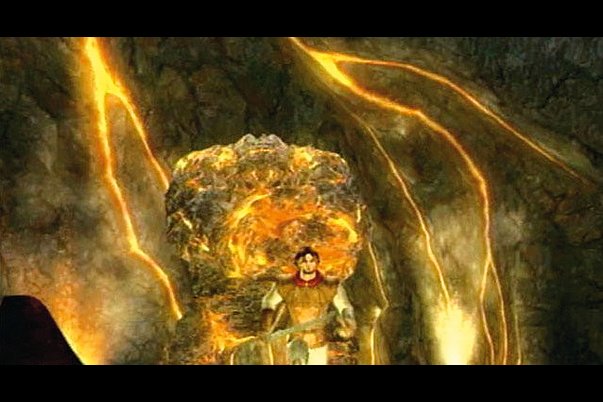Club Nintendo
Discover why the franchise players aren't made by who you think
What that relationship must be like, making games for the world's greatest games maker, is an interesting question. Sure it's great when Nintendo is bankrolling you to simply experiment and innovate, making fun games and exploring the technology as Factor 5 so successfully did with Rogue Leader. But what if a light goes on at Nintendo HQ and suddenly you're the team behind the next Mario or Donkey Kong spin-off, or even, heaven forbid, a game that unites the whole Nintendo clan? What happens when you're handed those crown jewels?
Dubbed the "Rareware of America" when they first appeared, Texas-based Retro Studios could probably tell you. Following in the footsteps of Nintendo's "Dream Team" of western developers, which during the Nineties included Rare, Acclaim and Factor 5, Retro was a classic Nintendo collaboration, inspired as much by the audacity of founder Jeff Spangenberg as the potential of their veteran staff. Spangenberg had previously found an adult audience for Nintendo 64 with Acclaim's Turok: Dinosaur Hunter, and if Wii has taught us one thing about Nintendo it's that they yearn for reliable ways to expand their market.

Showing that same hell-bent enthusiasm as HAL had done seven years earlier, Retro was a wellspring of talent with prohibitively high recruitment standards and five - yes, that's five - GameCube titles on the go. But when they expressed a desire to exploit the Nintendo connection more fully, asking NOA if they could turn their Retro NFL Football project into a vehicle for Mario, things took a turn. Nintendo, they discovered, was a company open to suggestions and flexible in their ambitions - but not one to be strong-armed into loaning out their stars.
And they didn't like uncertainties either. Reports of project mismanagement and bickering, thinly-spread staff at Retro began trickling through Nintendo's newswire, causing anxieties at high levels and prompting Shigeru Miyamoto, in April 2000, to pay the studio one of his personal visits. And he wasn't coming all the way from Japan just for a barbecue.
Let's talk, in fact, about Miyamoto's table manners for a moment. Gaming folklore has it that when the Mario creator sits at a table to evaluate a game or in this case a whole load of games, there's a chance he'll tip it over. He calls it "Chabudai Gaeshi," a term inspired by the antics of the ill-tempered dad in anime series Star of the Giants. When the character sees something he doesn't like, he upturns a table - and Miyamoto has created his own version. When he sees a videogame he doesn't like, he has it cancelled, or at least demands big changes.
Ask Left Field Productions, the California-based sports studio in which Nintendo bought a minority stake in 1998. Even then their staff spoke often of the monthly conference calls and irregular visits from Japan that would set projects back time and time again. Having also wooed the older teen and adult market with their NBA Courtside games and Excitebike 64, they moved ambitiously on to 1080 Avalanche, a sequel to Nintendo's 1080 Snowboarding. But reduced communication with Nintendo and frustrations at their desire to meddle with designs, some say, led to the two companies gently drifting apart. The Left Field management ultimately bought out Nintendo's stake in 2002 and severed ties completely.
Sign up to the GamesRadar+ Newsletter
Weekly digests, tales from the communities you love, and more
Analysts questioned whether this, in the same year as Nintendo's sale of their stake in Rare to Microsoft, was a sign of reduced interest in their distant second-parties and a strengthening of ties with HAL and internal teams such as Intelligent Systems.


